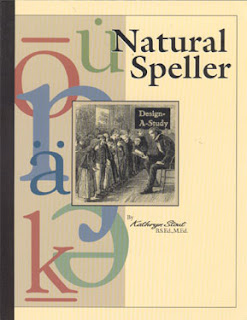Science Mysteries Motivate Kids to Learn!
I will confess that when I was in school, I didn't like science. I hated memorizing science voabulary, scientific facts, names of scientists, and dates of inventions. I hated experiments, dissecting dead creatures, and watching test tubes. I was more interested in plants and how they grew, but not so much in listing and memorizing the names of their parts. I wish my teachers in middle school or high school had been using That's Weird! Awesome Science Mysteries as a teaching resource instead of tiresome textbooks. I've always liked trying to solve mysteries!
 |
| Photo Courtesy of Pixabay. Text added on PicMonkey |
Science Doesn't Have All the Answers Yet
Author Kendall Haven states in his introduction to this book that "science is the process of turning mystery into knowledge." This is done through observations in the field and in laboratory experiments. Scientists form hypotheses from these observations and then test them as theories until time finally gives these tested theories the status of facts.
But not all theories have been proven yet. There are still some mysteries science hasn't been able to explain and the theories surrounding them haven't been verified. Instead these mysteries feed our imaginations and inspire fiction and movies. That's Weird! motivates and helps students in middle school and above use science research to explore sixteen of these mysteries:
- The Sunken City of Atlantis
- The Bermuda Triangle
- Black Holes
- What Really Killed the Dinosaurs
- Easter Island and its Stone Giants
- Surviving Firewalks and Beds of Nails
- Ghosts: Real or Not
- Lightening: Killer or Resource
- Lock Ness Nessie: Real or Myth
- Life on Mars or Not
- The Birth of the Universe
- Sea Serpents
- The Origin and Mystery of Stonehenge
- Will We Ever Travel Through Time?
- What Exactly Are UFO's?
- Will Humans Ever Be Able to Travel Faster than Light?
That's Weird!: Awesome Science MysteriesCheck Price
How That's Weird! Is Organized
Each mystery in this book is presented in seven different parts
- At a Glance: This creates a historical context for the mystery by introducing major players and historical events that play an important part in the story. Information in this section is as factually reliable as it can be, as far as it goes.
- The Mystery: This is an actual story that engages the reader by drawing him into a scenario related to the mystery. I'm much older than the target age and I still very much enjoyed the stories. The subjects were all ones I've often wondered about. Some of the events in the stories actually happened, but many have not been verified. The author has given many his own interpretations based on known facts and tells you that up front.
- About this Story: The author deals with the likelihood of whether the story may be true or not.
- The Science: Since this book was designed to help science teachers hook their students on science through mysteries, he explains any known evidence, hypothesis, or theory scientists use to evaluate the truth of the mystery. He explores some of the controversies that surround the subject of the story.
- Fact or Fiction: A presentation of the evidence for and against the truth of the mystery. Students will see the conclusions scientists have drawn from their current knowledge.
- Follow-up Questions to Explore: These interesting questions help students explore the science concepts that relate to the mystery and encourage them to see how the opinions they've formed stack up against the known evidence. They are much more fun than the questions at the end of science textbook chapters I had to write out answers for when I was a student.
- Follow on Activities: These activities help bring the themes of the stories to life with discussions and demonstrations. They serve as starting points for teachers to run with. There is also a list of references for further reading related to the mystery.
Who Would Find this Book Useful?
It is recommended for for students in grades four and up. I would say that it's more appropriate for teaching classes of gifted students at that age. For regular classes I'd not introduce this until grade six or seven. Homeschooling parents should also find this a wonderful resource they can use in a number of ways. Once they read it, they can determine when and how to use it with their own children. I'm guessing if it's left around where children can see it, older children will pick it up on their own.
That being said, I thoroughly enjoyed the book even though science has never been my favorite subject. The stories really grabbed my attention and made me want to read the evidence for and against their being true. I considered it recreational reading. I think anyone who enjoys mysteries might enjoy reading this book.
You might also enjoy some of Kendall Haven's other books. He loves science, but also stories.
Wonders of the Sea (Wonders of Nature: Natural Phenomena in Science and Myth)
Note: The author may receive a commission from purchases made using links found in this article. “As an Amazon Associate, Ebay (EPN), Esty (Awin), and/or Zazzle Affiliate, I (we) earn from qualifying purchases.”


































